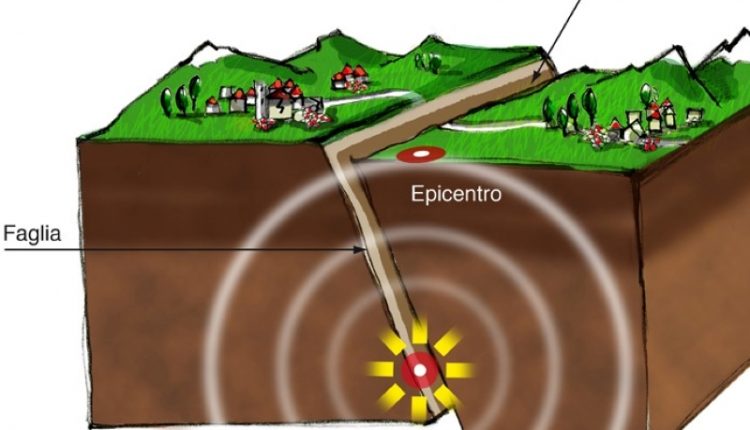
Difference between wave and shaking earthquake. Which does more damage?
An earthquake can be felt jerkily or undulatory. But do these two types of movements really exist?
In a certain sense yes, but only from the point of view of the warnability of an earthquake, in fact there are no “undulating earthquakes” and “vibrating earthquakes” from the seismic point of view: they are such only on the basis of the way in which they are perceived by people who suffer it.
MANAGEMENT OF MAXIMUM CIVIL PROTECTION EMERGENCIES: VISIT THE SERAMAN BOOTH AT THE EMERGENCY EXPO
Wave earthquake
An undulatory movement determines the sensation of a strong oscillation giving, to those who feel the earthquake, the sensation of being on a ship or on a swing since the movement lasts a long time and is perceived as “wide” and on the horizontal plane (perception of movement “right – left”).
This oscillatory movement is felt when the person is at great distances from the epicenter of a very strong earthquake: in this case the seismic waves will arrive “horizontally”, in an uneven way and with a lower speed than a point near the epicenter: consequently, on the ground, there will be this effect linked to the oscillation, which causes, for example, important movements on suspended objects such as chandeliers, but also the movement of beds, furniture and tables.
The more the hypocenter is superficial and the farther you are from the epicenter, the more the earthquake will be felt as undulatory (with “horizontal” movements).
VISIT ADVANTEC’S BOOTH AT EMERGENCY EXPO AND DISCOVER THE WORLD OF RADIO TRANSMISSIONS
Shaking earthquake
A jolting movement is a great shaking that occurs when the seismic waves reach the building under examination: the movement is short, “short” and felt on the vertical plane (perception of “up – down” movement).
When an earthquake is perceived in a jerky way, generally the person is close to the epicenter and the seismic waves arrive “direct” and “vertical”, causing the clear shaking whose intensity varies according to the magnitude with which the earthquake is recorded .
Whoever is exactly above the epicenter has the greatest sussultory perception.
Being a jolt in the vertical plane and not an oscillation, the chandeliers tend to move less than the oscillatory earthquake or not to move at all.
The deeper the hypocenter is and the closer you are to the epicenter, the more the earthquake will be felt as a jerking (with “vertical” movements).
DO YOU WANT TO KNOW RADIOEMS? VISIT THE RADIO BOOTH DEDICATED TO RESCUE IN EMERGENCY EXPO
Wave and tremor earthquake: which one does more damage?
There is no type of earthquake, tremors or waves, which is necessarily more harmful than the other, also because – from what has been said – it should be clear that the same identical earthquake can be felt as tremors, near the epicenter, and waves, by those who are far from the epicenter.
However, there is an evaluation to be made: when a very strong earthquake is perceived as trembling, the damage to things and people can be either very serious or very slight; if, on the contrary, a very strong earthquake is perceived as undulatory, in general the damage to things and people near the epicenter tends more frequently to be serious or very serious.
However, both types of earthquake can have very variable destructive effects, which mainly depend on the magnitude of the earthquake itself, the distance from the epicenter, the type of subsoil and the type of buildings and structures in the affected area.
Read Also
Emergency Live Even More…Live: Download The New Free App Of Your Newspaper For IOS And Android
Earthquake And Loss Of Control: Psychologist Explains The Psychological Risks Of An Earthquake
Civil Protection Mobile Column In Italy: What It Is And When It Is Activated
Earthquakes And Ruins: How Does An USAR Rescuer Operates? – Brief Interview To Nicola Bortoli
Earthquakes And Natural Disasters: What Do We Mean When We Talk About The ‘Triangle Of Life’?
Earthquake Bag, The Essential Emergency Kit In Case Of Disasters: VIDEO
Disaster Emergency Kit: how to realize it
Earthquake Bag : What To Include In Your Grab & Go Emergency Kit
How Unprepared Are You For An Earthquake?
Emergency Backpacks: How To Provide A Proper Maintenance? Video And Tips
Earthquake and How Jordanian hotels manage safety and security
PTSD: First responders find themselves into Daniel artworks
Emergency preparedness for our pets



